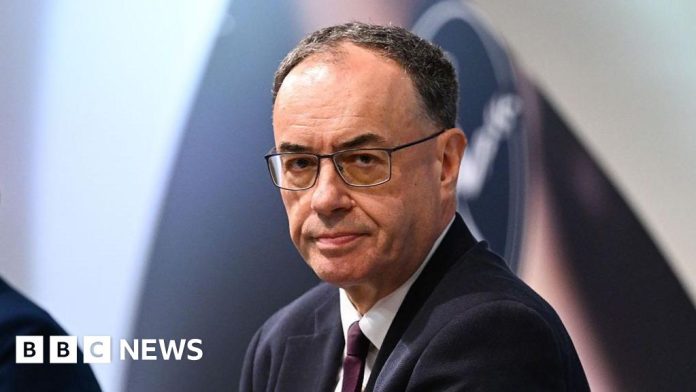So why has the Bank of England cut rates when inflation is well above its target of 2% and seems set to remain there?
This vexed question is why the proceedings of the Bank’s nine member Monetary Policy Committee were so close and even involved an unprecedented second vote.
The bottom line is that in the medium term the Bank sees the jobs market as exerting less upward pressure on inflation, because of a fall in the number of job vacancies and an increase in the jobless rate.
But Bank governor Andrew Bailey and his team will have some explaining to do.
Inflation remains high, and the very visible food price inflation figures look set to go up over the remainder of the year.
So the ripples of inflation remain and there are risks around an expected further cut in interest rates in November.
It is notable that both deputy governor Clare Lombardelli and chief economist Huw Pill voted to hold rates, against the judgement of the governor.
Mr Bailey acknowledged to me that there was now more uncertainty about the pace of cuts, which it had previously been assumed would continue at once per quarter into next year.
The bigger question is why this series of cuts – five over the past year – has not boosted the economy more dramatically.
The Bank expects second quarter GDP growth, which will be published by the Office for National Statistics next week, to be just 0.1%.
However, thereafter it does predict that in the third quarter, economic growth will pick up to 0.3%, partly on the back of the prime minister’s trade deal with the US boosting what had been flagging exports.
Obviously, the global backdrop has weighed down on the economy.
The Bank points to the 24% drop in UK car exports to the US in May. That should now reverse.
The notable economic factor has been the very high rate of savings in the economy, remaining at pandemic double digit levels as a proportion of the economy.
Essentially, although pay has been rising faster than inflation, consumers have not felt confident enough to increase spending. This is partly an expected result of what were high interest rates.
But the general negative vibe, not helped by what was a rather downbeat drumbeat from government last year, does appear to have held consumers back.
If spending reverts to normal, and savings rates decline, then the Bank predicts a notable improvement in economic growth, eventually.
But the lingering suspicion that inflation has not quite been defeated, which will be seen in upcoming food prices, remains.
And the Bank clearly is picking up the impact of some government policies, from the rise in National Insurance for employers, and the national living wage.

